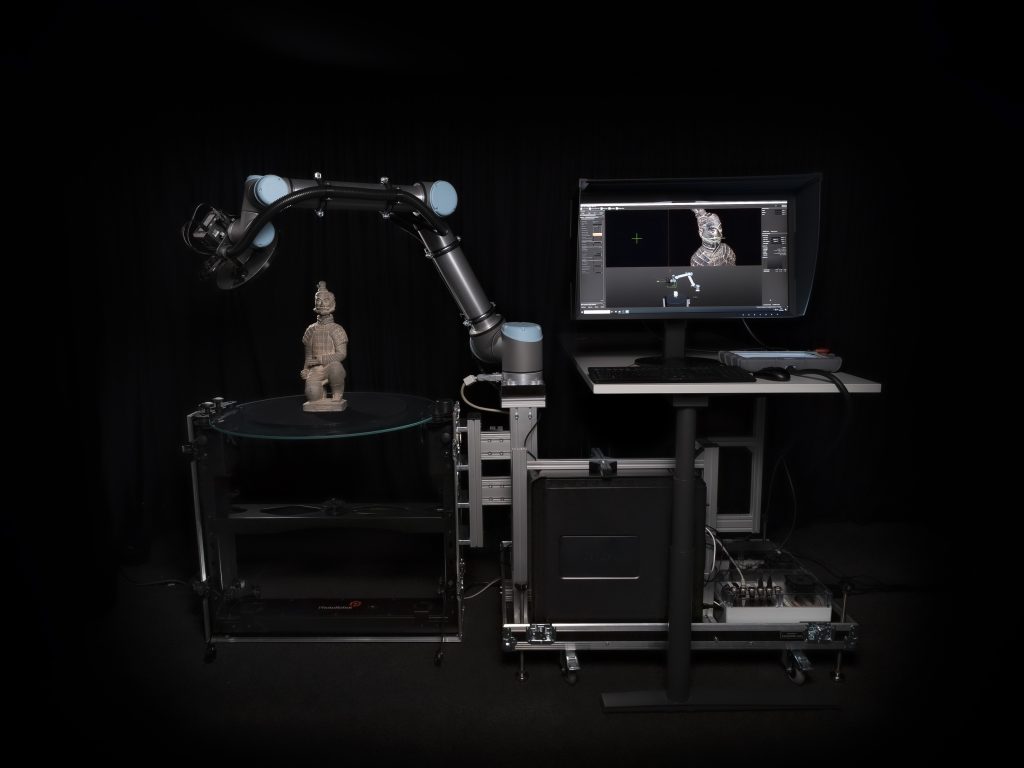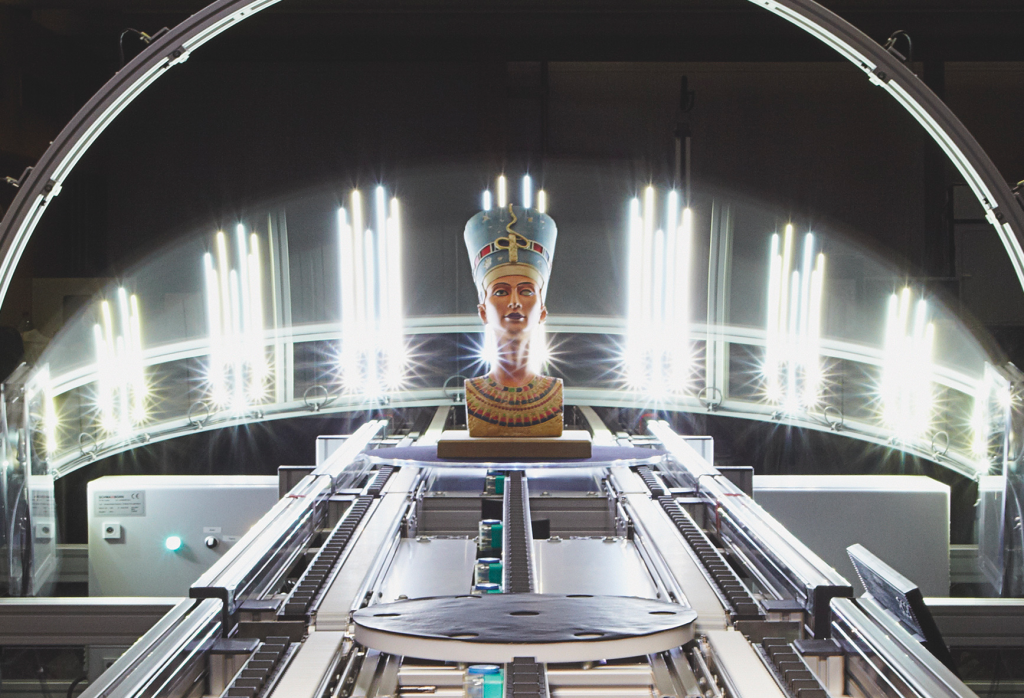The Fraunhofer Institute for Computer Graphics Research (IGD) has developed a second generation of its robotic arm-mounted archival 3D scanner.
Known as the ‘CultArm3D,’ the upgraded device features Danish camera firm Phase One’s bespoke imaging technology, and is designed to precisely capture and recreate 3D models of museum exhibits. Given that COVID-19 continues to prevent many from visiting museums in person, the Fraunhofer team hope that their new system can help bring historic displays to people virtually instead.
“3D models are tremendously important for research, and can help improve our understanding of objects and their origins,” said Pedro Santos, Department Head at Fraunhofer IGD. “They also serve as the basis for visualization in virtual and augmented reality, and when using 3D printing to create true-color replicas.”

Fraunhofer’s improved CultArm3D
For several years now, the Fraunhofer team has been working with museums to optimize their large-format scanner for archival applications. Given that no two exhibits are the same, and staff need to be able to operate the system alone, the researchers have focused on creating a device that’s both highly-accurate and accessible at the same time.
To accomplish this, Fraunhofer IGD has developed two iterations of the CultArm3D, which are both capable of imaging objects up to a meter tall and 60kg in weight, with other set-ups available on request. The device’s arm itself is lightweight, making it easy to transport from exhibit-to-exhibit, while its compatibility with ordinary power supplies enables it to be erected without any specialist assistance.
In order to provide the CultArm3D with the ability to capture ultra-high resolution images, the institute has now armed it with a Phase One iXG 100-megapixel camera. Once paired with the researchers’ autonomous scanning algorithm and custom lighting ring, the mobile rig is effectively capable of illuminating and imaging objects from almost any angle.
Even when capturing exhibits with reflective surfaces such as gold or bronze relics, the system is able to visualize and model any complex occlusions. The upgraded CultArm3D also meets several international calibration and modelling standards, including those related to the geometry, texture, and color of target objects.

Lights, camera, robotic scanner
During operation, the scanning arm’s software makes it easy to run without supervision, and once it’s been calibrated, scans can be initiated by the press of a single button. Many of the CultArm3D’s functions are automated, and when prompted, it conducts a quick initial scan before using dynamic viewpoint selection to capture exhibits in ultra-high definition.
When ready, the 3D model captured by the scanner can be exported in multiple formats, including 2D and 3D video, web models or even as a print-ready file. In fact, the device is particularly adept at modelling complex objects for 3D printing, given that its accuracy minimizes the need for time-consuming post-processing.
An earlier version of the machine has already been installed at the State Museum of Baden, where it allows visitors to scan certain objects and visualize them in VR. Elsewhere, the CultArm3D is also being evaluated and used to digitize exhibits at The Getty in Los Angeles and The REM in Mannheim, amongst a selection of others.
Having demonstrated the capabilities of its scanning platform, Fraunhofer IGD is now encouraging other museums to get in touch if they’d consider installing the machines. In terms of a commercial release, the institute intends to open the first phase of its sales channel at an undisclosed date in 2022.
3D scanning and renovating relics
3D scanners can be used to replicate any number of objects with precision, but they’ve proved particularly adept at restoring ancient artifacts and historic sites. The Scan the World project has opened museum collections to a wider audience with free access to thousands of high-resolution scans.
Using NVision’s 3D scanning technology, archivists at the Texas Through Time museum have been able to digitally preserve the fossilized skeleton of an ancient predator. The ancient remains were described by the institution’s founder Andre LuJan at the time as being “crucial in understanding Texas’ ancient history.”
Similarly, Spain’s National Archaeological Museum has adopted ACCIONA’s technology to create a replica of the San Pedro de las Dueñas Arch. The 2.2-meter tall reproduction was hailed by the museum’s director as a demonstration of 3D scanning’s potential in helping to “preserve cultural heritage.”
To stay up to date with the latest 3D printing news, don’t forget to subscribe to the 3D Printing Industry newsletter or follow us on Twitter or liking our page on Facebook.
Are you looking for a job in the additive manufacturing industry? Visit 3D Printing Jobs for a selection of roles in the industry.
Featured image shows Fraunhofer IGD’s CultArm3D robotic scanner. Image via Fraunhofer IGD.



